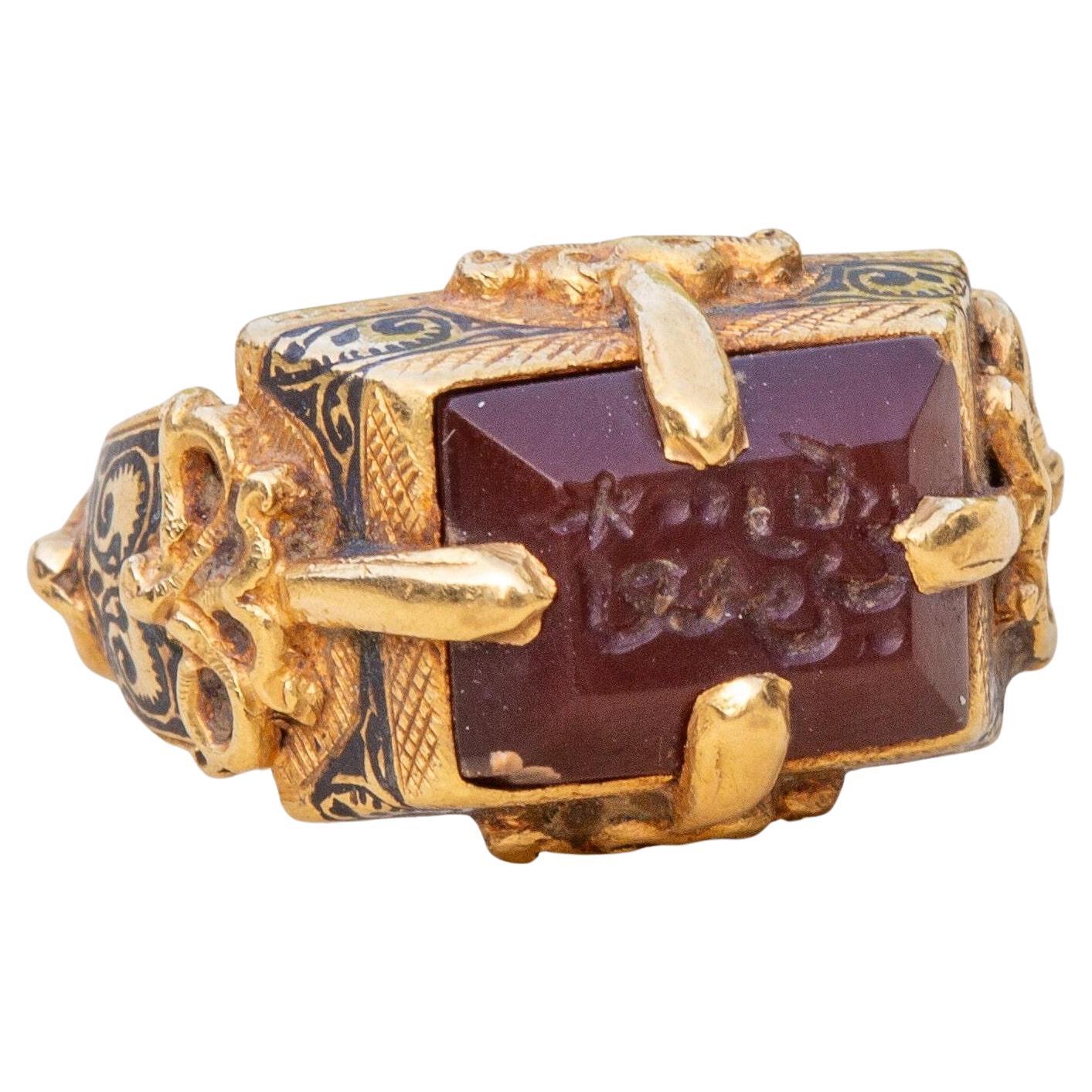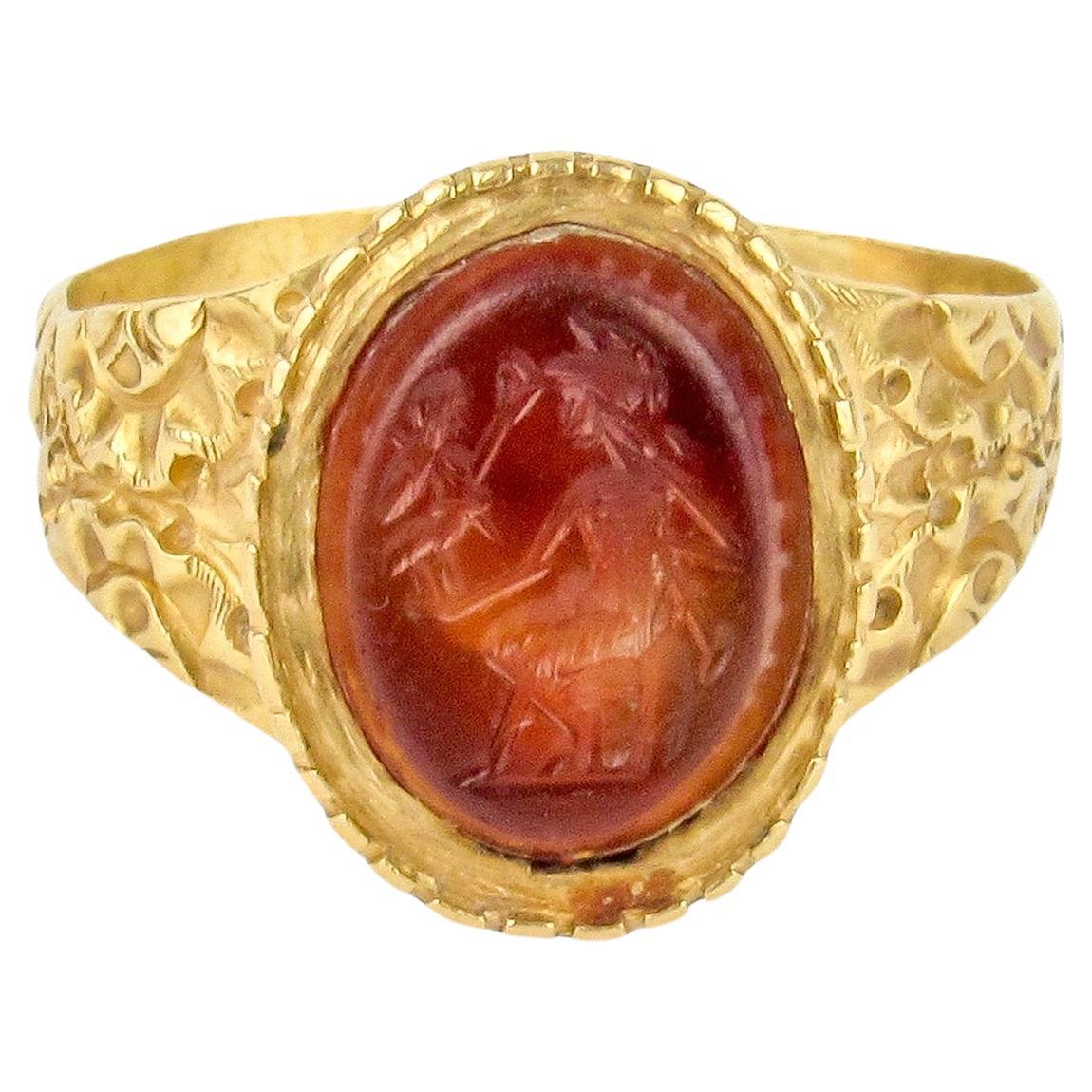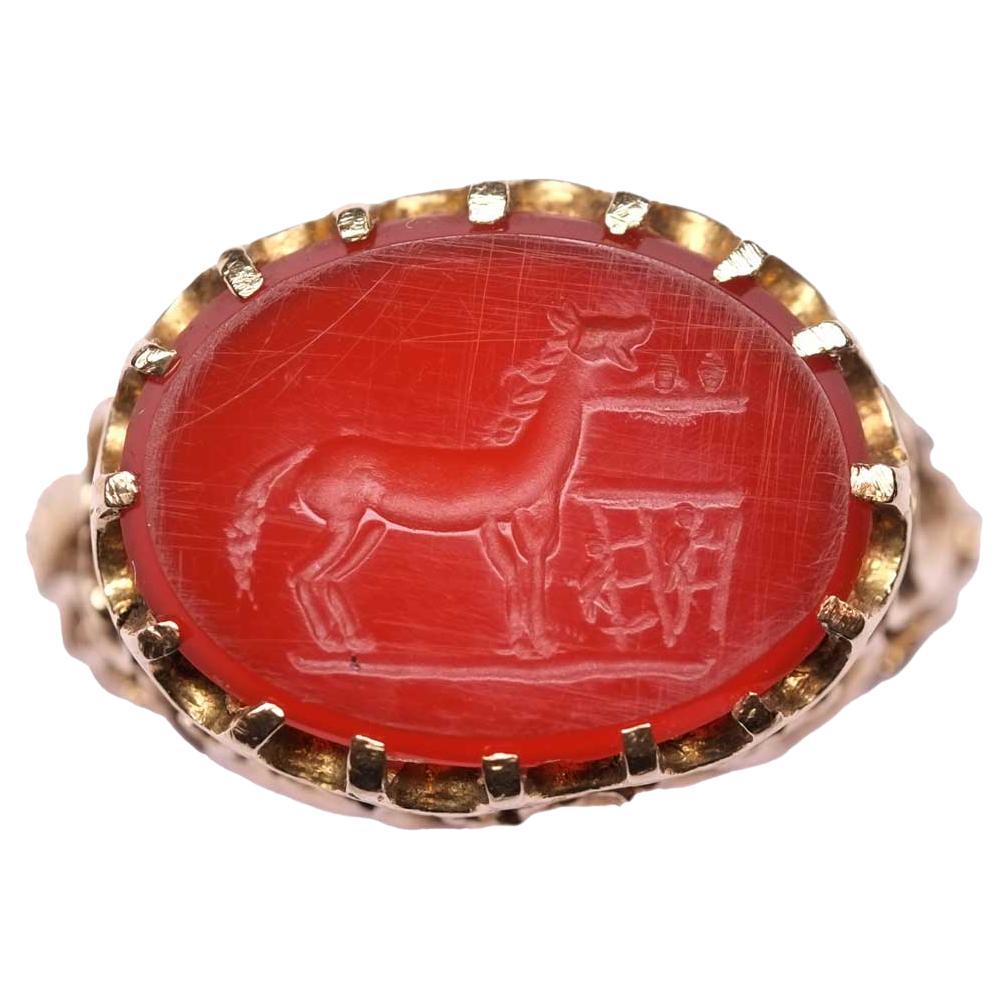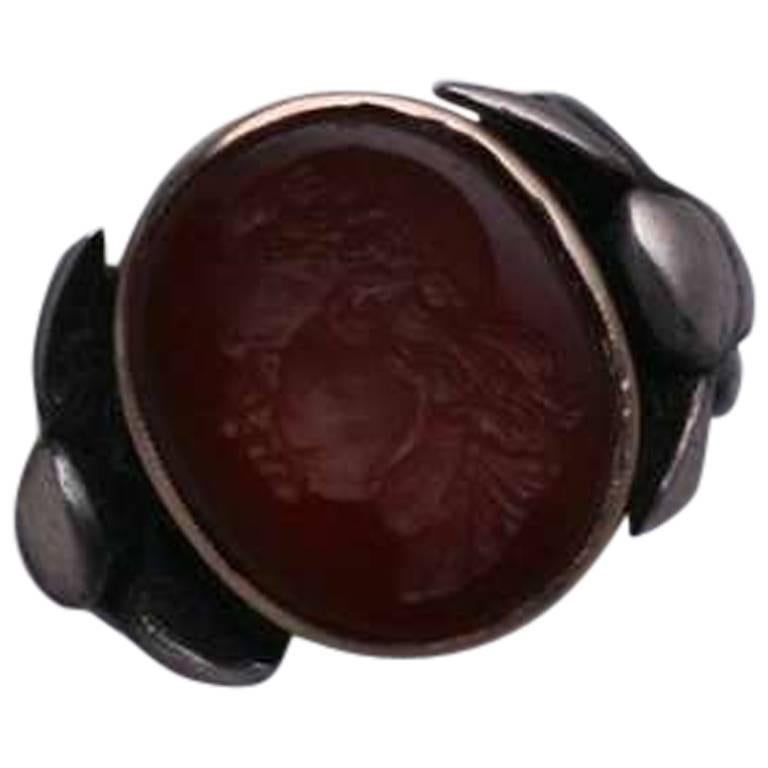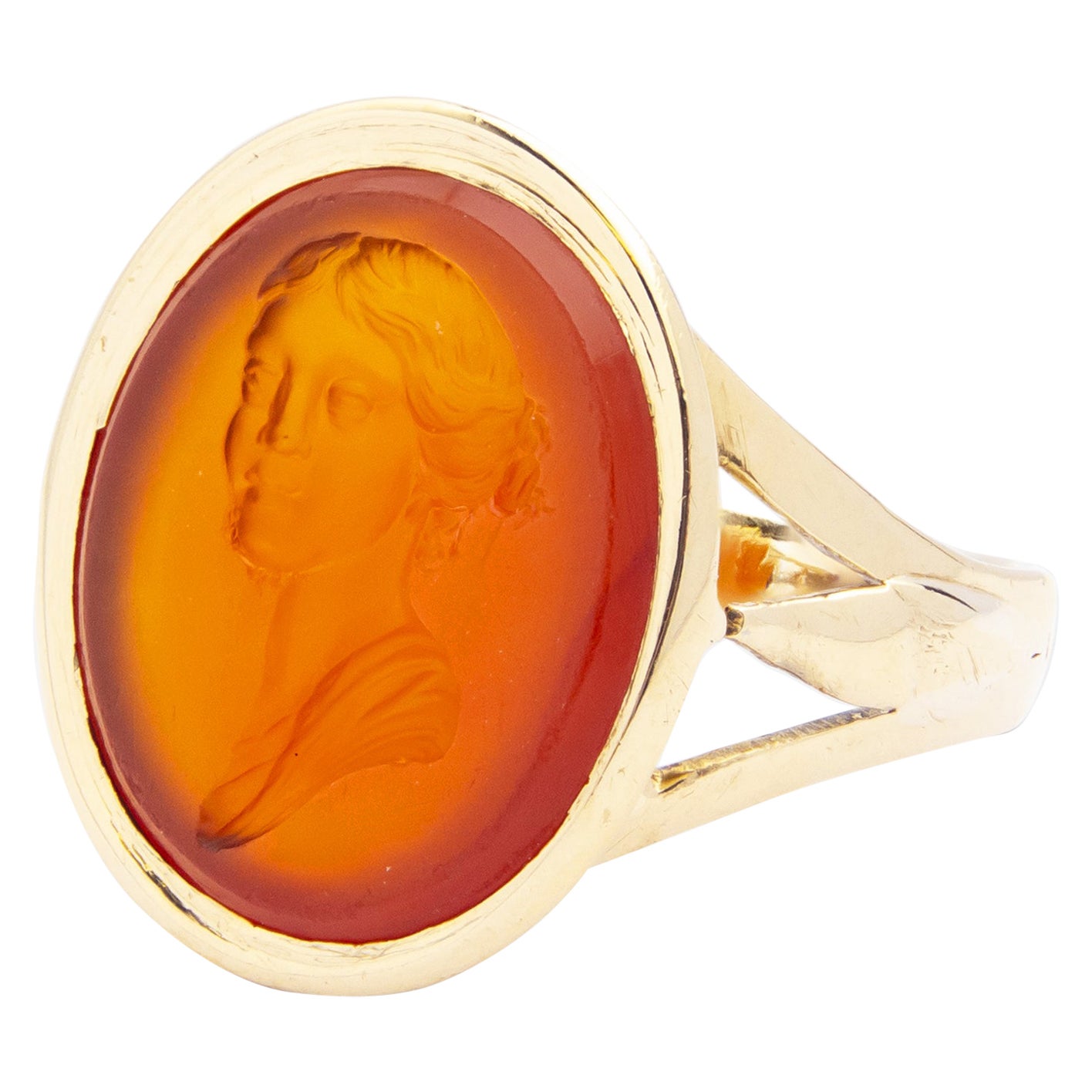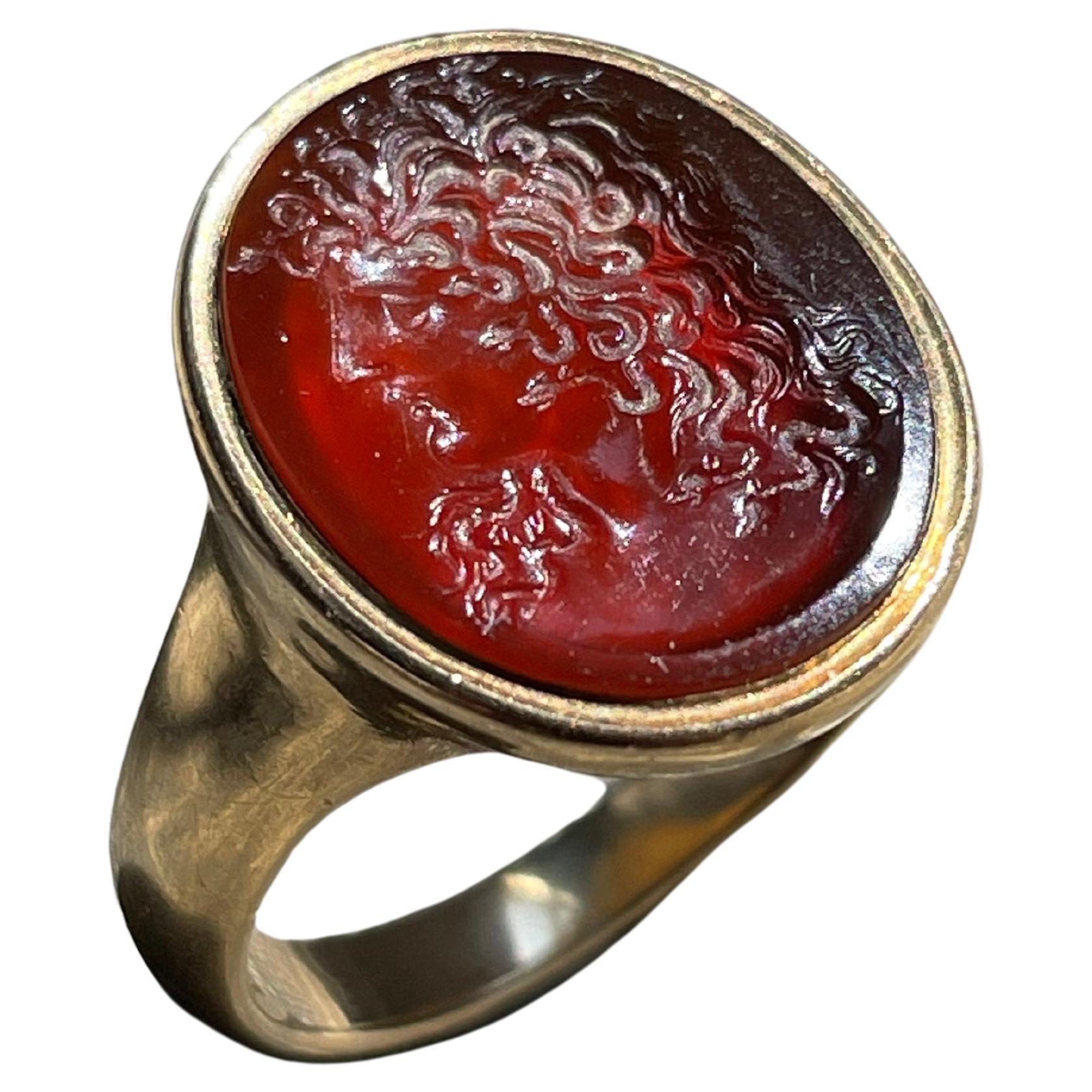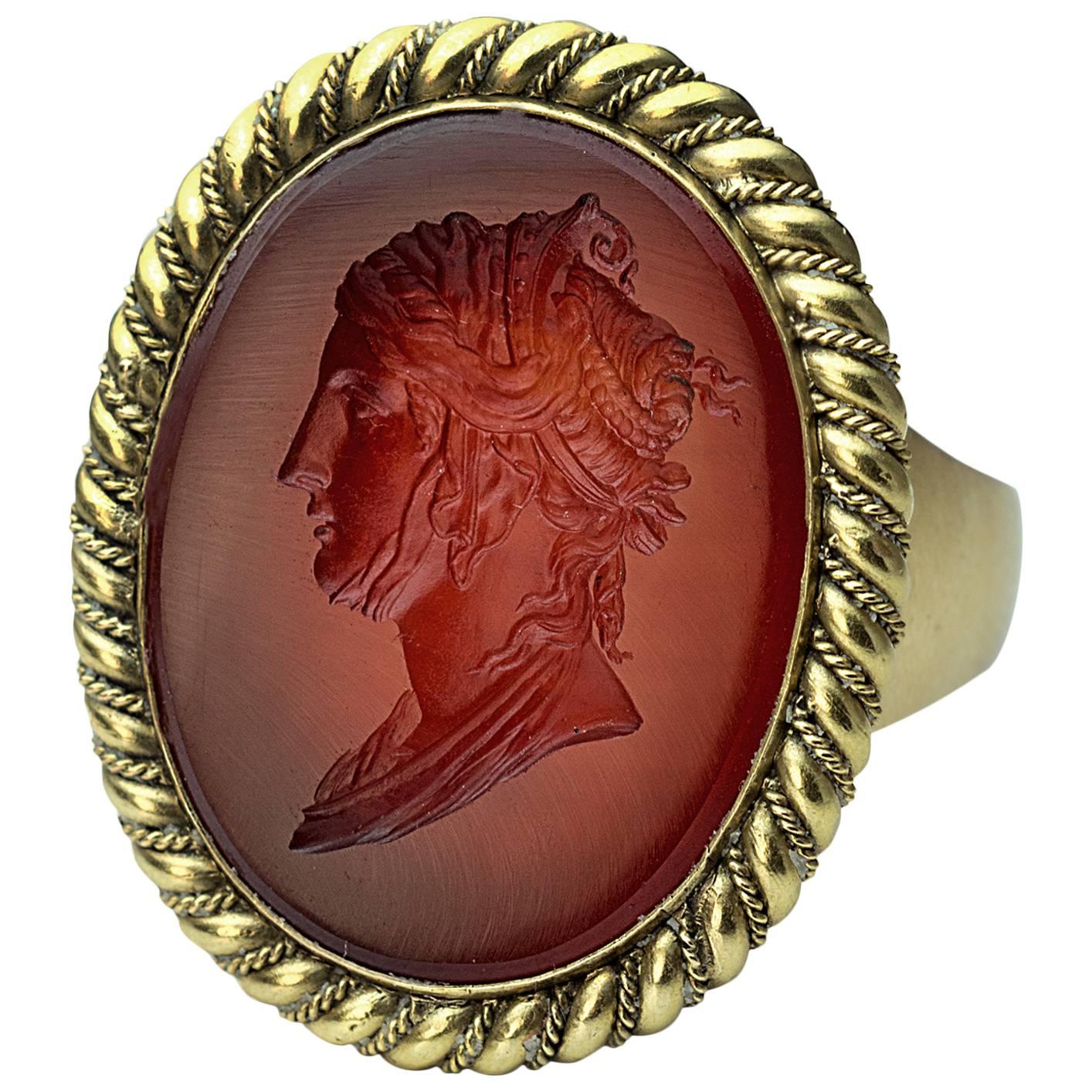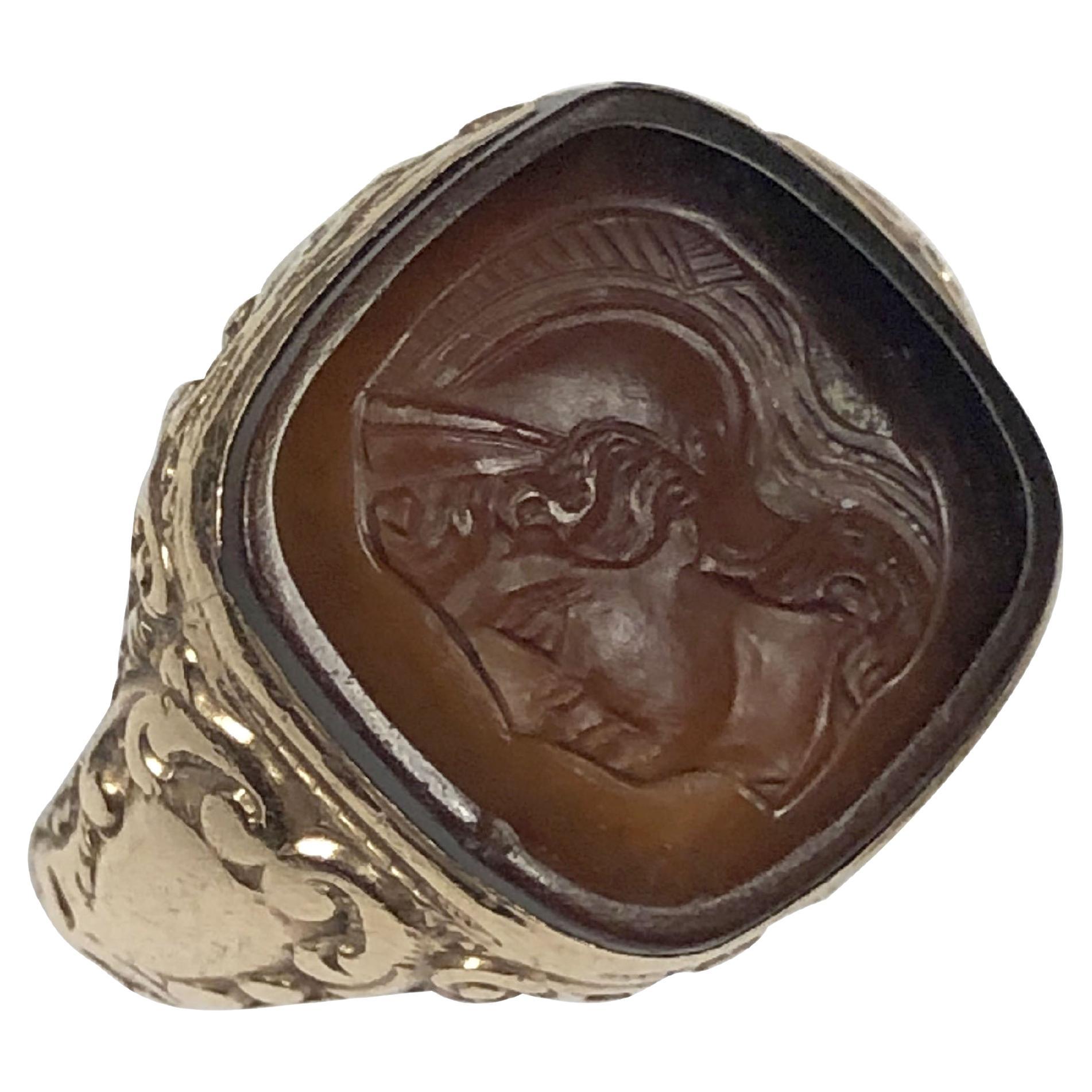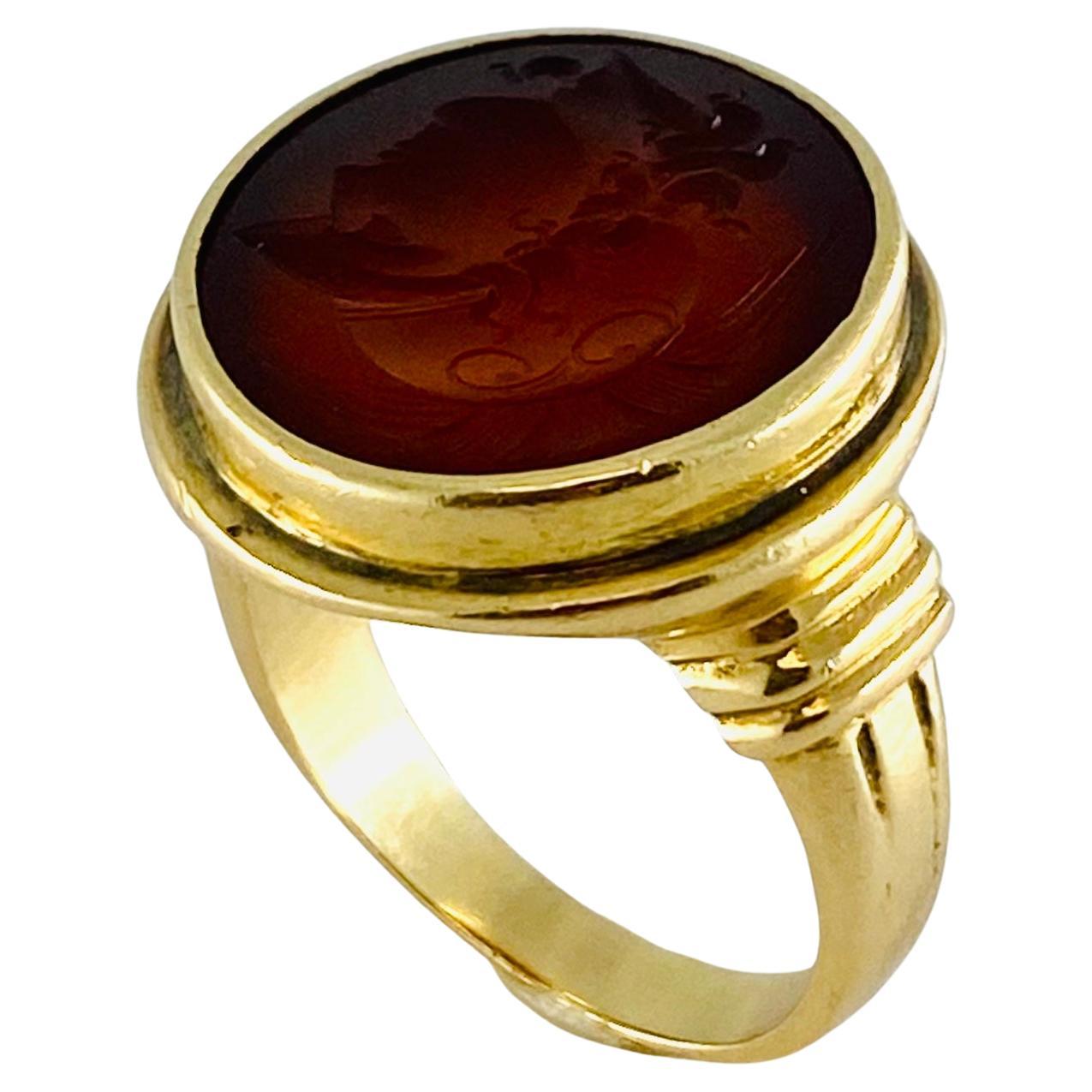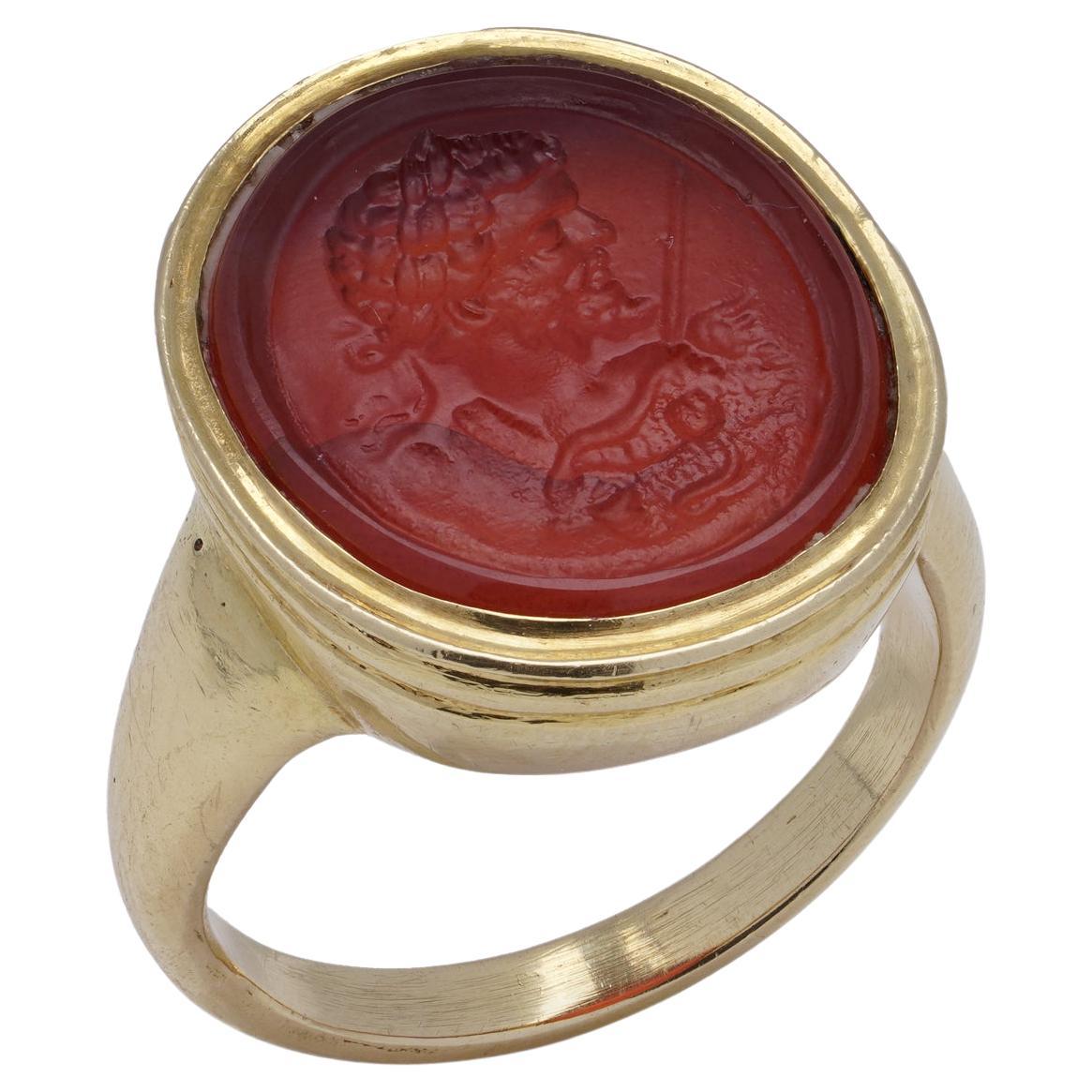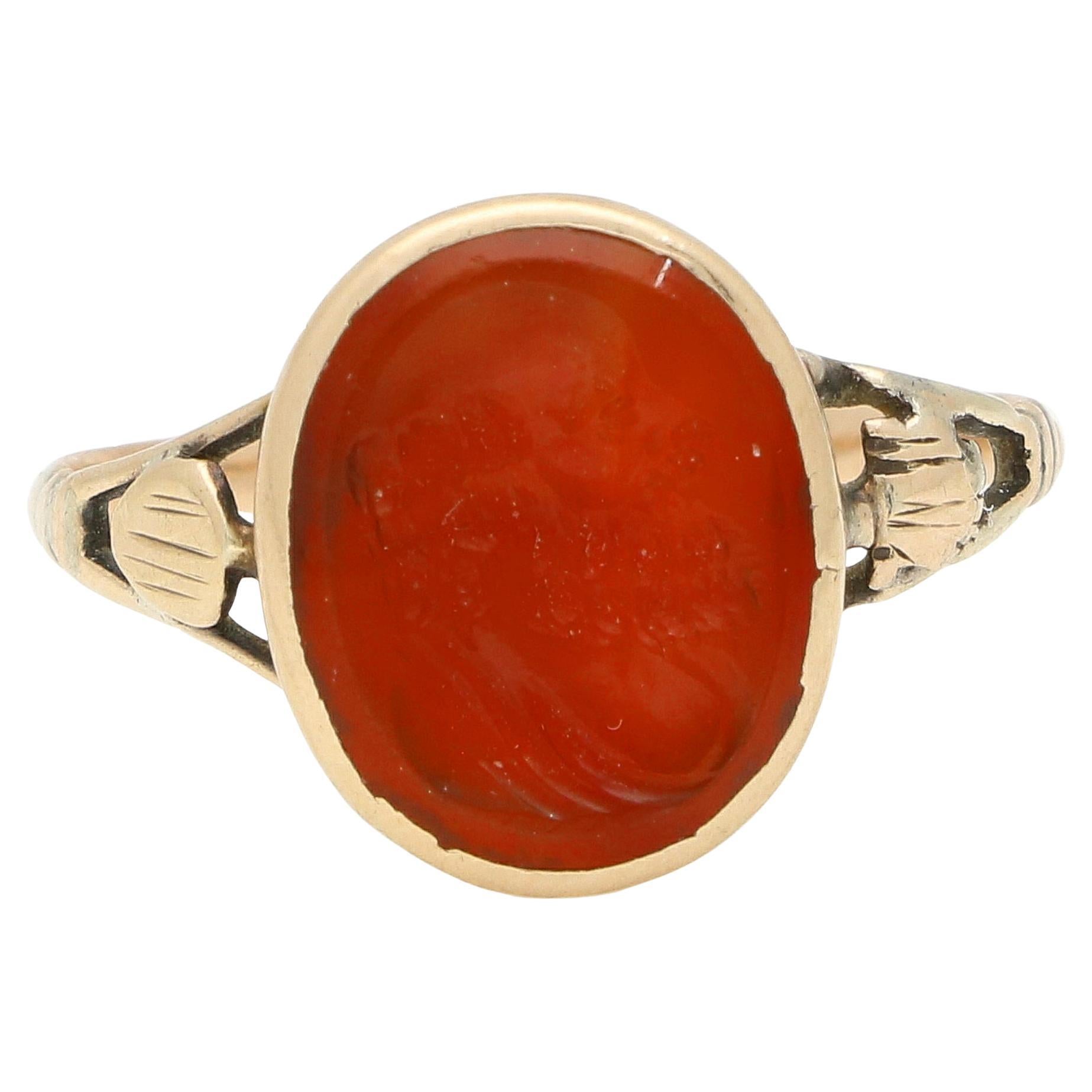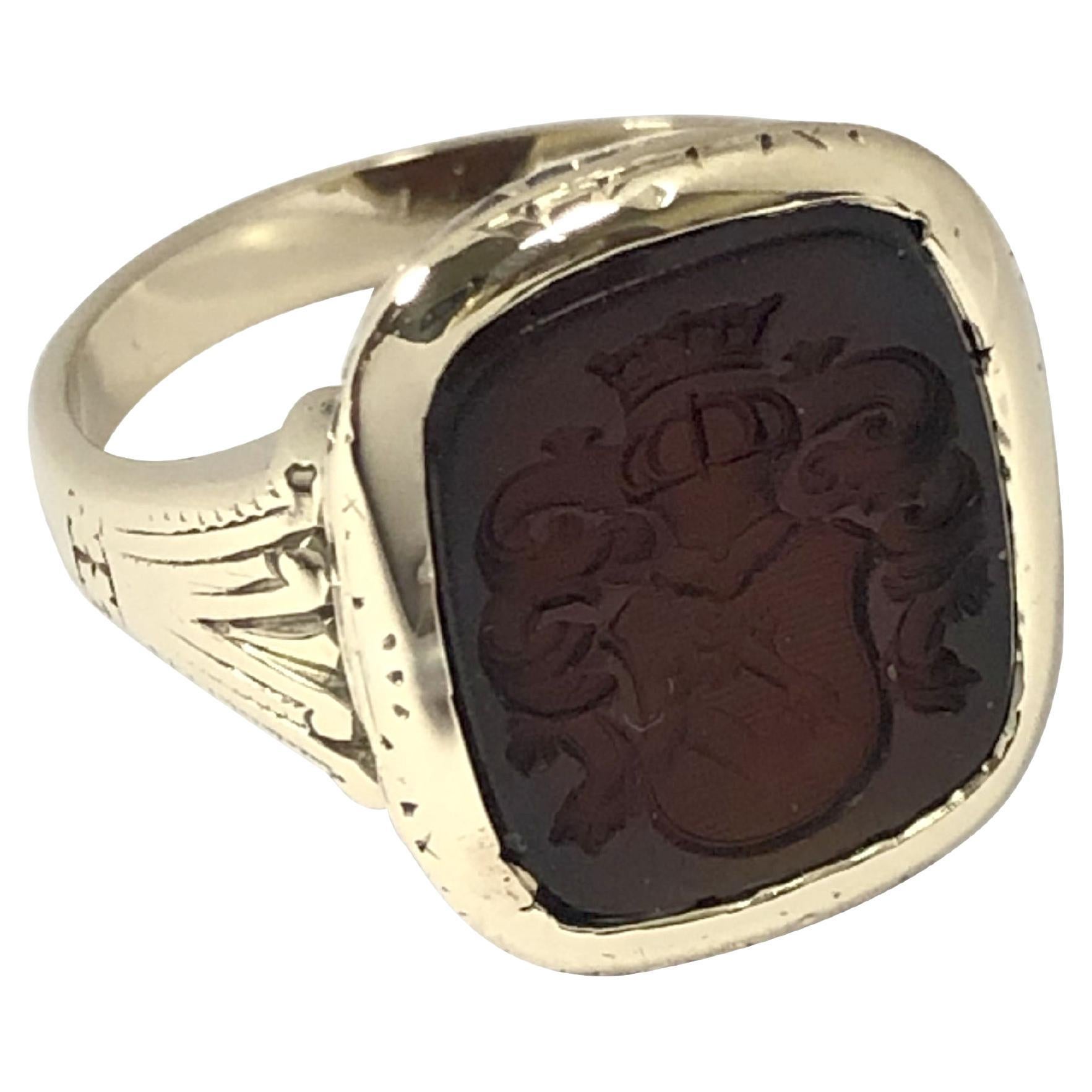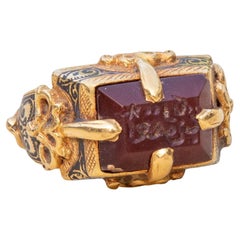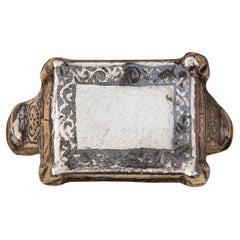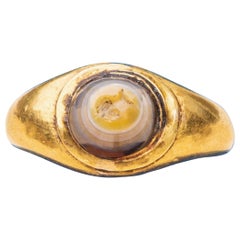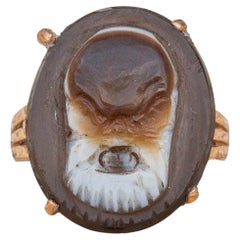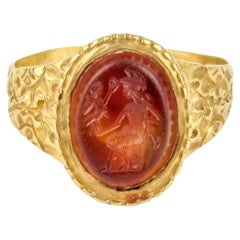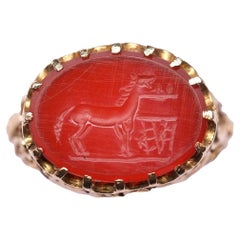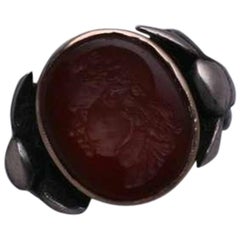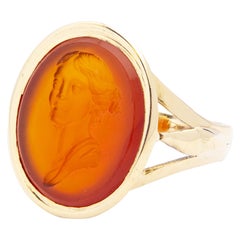
Museum-Grade Antique Early Seljuk ‘Selçuklu’ Period Islamic Intaglio Ring
View Similar Items
Want more images or videos?
Request additional images or videos from the seller
1 of 15
Museum-Grade Antique Early Seljuk ‘Selçuklu’ Period Islamic Intaglio Ring
About the Item
About the Seller
5.0
Vetted Professional Seller
Every seller passes strict standards for authenticity and reliability
Established in 2019
1stDibs seller since 2022
46 sales on 1stDibs
Typical response time: 1 to 2 days
Authenticity Guarantee
In the unlikely event there’s an issue with an item’s authenticity, contact us within 1 year for a full refund. DetailsMoney-Back Guarantee
If your item is not as described, is damaged in transit, or does not arrive, contact us within 7 days for a full refund. Details24-Hour Cancellation
You have a 24-hour grace period in which to reconsider your purchase, with no questions asked.Vetted Professional Sellers
Our world-class sellers must adhere to strict standards for service and quality, maintaining the integrity of our listings.Price-Match Guarantee
If you find that a seller listed the same item for a lower price elsewhere, we’ll match it.Trusted Global Delivery
Our best-in-class carrier network provides specialized shipping options worldwide, including custom delivery.More From This Seller
View AllAntique Gold Seljuk 12th Century Ring Carnelian Intaglio Kufic Islamic Signet
Located in London, GB
This incredible, rare gold ring dates from the 12th century Seljuk dynasty. The carnelian intaglio is set within a typical Seljuk tapered rectangular bezel with a four-pronged gold setting soldered to the outside of the bezel. Applied and pierced arabesque designs are placed at the bottom of each prong which also reinforce the joints.
Further applied gold Seljuk ornamentation decorates the band, including two gold birds and a highly decorative vestigial sprued bottom (back-knob) from the casting. The gold mount itself is also ornately and intricately chased and nielloed with arabesque patterns. Remarkably, the niello work remains in exceptional condition, and can still be seen on the underside of the bezel which is decorated with a lattice pattern.
The carnelian intaglio seal is flat cut base with bevelled sides. This shape was predominantly used in the seals from the 8th to 11th century. The seal is engraved with angular Kufic script with forked terminals which dates the seal to the 9th-12th centuries (Porter, 2011).
For similar referenced examples in museums and notable collections, see final photos, in particular item 26 in ‘Islamic Rings and Gems: the Benjamin Zucker Collection’ (1987).
UK size K, US size 5.25
The ring weighs 9.19 grams and is crafted in high-karat gold (21K gold). The carnelian stone measures 11mm x 8mm x 3mm. The hollow box bezel measures 16mm x 10mm and protrudes 7mm from the base.
This museum-grade ring is a rare survivor, most existing examples have some damage to the ring, intaglio or niello - this is a scarce example in superb, original condition.
The Seljuks, a Turkish dynasty of Central Asian nomadic origins, became the new rulers of eastern Islamic lands following the defeat of the powerful Ghaznavids at the Battle of Dandanakan (1040). Under the Seljuk sultanate, which spanned from the 11th to the 13th century, goldsmiths and jewellers created works of unparalleled beauty and sophistication. Seljuk jewellery...
Category
Antique 15th Century and Earlier Engagement Rings
Materials
Carnelian, Gold
Ancient Seljuk Dynasty Islamic Nielloed Silver Signet Ring Medieval
Located in London, GB
Very Rare Antique Seljuk ‘Selçuklu’ Period Niello & Silver Islamic Ring
This incredible piece dates to the 11-13th century Seljuk/Seljuq dynasty. The rectangular bezel features an o...
Category
Antique 15th Century and Earlier Engagement Rings
Materials
Silver
Ancient Roman Gold Mens Signet Ring Conical Intaglio Ring Gem Carving
Located in London, GB
A superb ancient Roman agate intaglio ring. The high-karat gold signet ring is set with an engraved gemstone, known as an ‘intaglio’. It dates from between the 2nd to 3rd century AD and is a fine example of a Romano-British intaglio.
The conical-shaped agate gemstone displays various bands of colour ranging from honey brown to greyish-blue. The engraving depicts the bust of a man wearing a helmet, possibly winged which would depict Mercury, the Roman god of commerce, financial gain and communication. In Roman times, people would wear rings with the intaglio of Mercury in hope that the he would protect them and bless them with good financial fortune in their lives.
A number of referenced examples of similar ancient Roman conical shaped intaglios reside in notable museums all across the world, from the British Museum to the Louvre. A page with these examples and their sources can be found in the final photos of the listing. Similar examples can also be found in the extensive Alice and Louis Koch collection (items: 234, 235, 241, 301). Again see final images for reference.
The gold ring mount is of D-shaped cross-section and a hollow 22K gold construction. The ring has a fantastic smooth silk-like texture when worn. It remains in good overall condition and the intaglio is very secure in the mount. The gold mount dates to the late 18th to early 19th century, and the shape is inspired by ancient Roman ring...
Category
Antique 15th Century and Earlier Signet Rings
Materials
Agate, 22k Gold
Antique Gold Cameo Ring Greek Theatre Mask Silenus Hardstone Intaglio Signet
Located in London, GB
A very unusual antique gold ring set with a carved brown and white hardstone cameo depicting the theatrical comic mask of Silenus, the Greek mythological old rustic god of wine-making and drunkenness. The ring was made in the late 19th century and carries French control marks for 18K gold, whilst the cameo is probably Italian and made slightly earlier, circa 1800.
Silenus was a companion to the wine god Dionysus, and suitably he was a notorious consumer of wine, usually drunk and supported by satyrs or carried by a donkey. Silenus was described as the oldest, wisest and most drunken of the followers of Dionysus, and was said to possess special knowledge and the power of prophecy when intoxicated. He presides over the other satyrs and is related to musical creativity, prophetic ecstasy, drunken joy and drunken dances.
Silenus was usually depicted as a jovial old man, bald yet bearded, with a pot-belly, thick lips and snub-nose. The masks worn to play him in theatre really emphasised these features, as you can see with this cameo carving
Theatre was a key part of ancient Greek culture. The theatrical masks worn by the actors, known as ‘prosopon’, served various purposes. They enabled individual actors to play multiple roles (or genders) in the same performance; the exaggerated expressions helped define the character being portrayed; they helped spectators in the back rows to tell the characters apart. This particular masked as mentioned before is a comedic Silenus, please see final photo for other examples of Silenus masks in museum collections.
UK size N 1/2, US size 7
4.84g 18K gold
French ‘tête...
Category
Antique Early 19th Century Italian Georgian Signet Rings
Materials
Agate, 18k Gold
18th Century Garnet Intaglio Signet Ring
Located in London, GB
Rare Antique Late 18th Century Garnet Intaglio Signet Ring with Rose Cut Diamonds
This fantastic signet ring dates to around 1780 and was made in Paris. A closed-back and bezel set ...
Category
Antique Late 18th Century Neoclassical Signet Rings
Materials
Diamond, Garnet, 14k Gold, Silver
Royal Siam 'Thai' Museum-Grade 18th Century Ayutthaya Ceremonial Ring
Located in London, GB
This incredibly ornate piece was made in Siam during the late Ayutthaya or early Rattanakosin Kingdom period. It dates to the late 18th and is a very rare example of a ceremonial ‘mondop’ or ‘pagoda’ ring.
These rings were made for the monarchy and aristocratic class of Siam to be worn as part of the lavish adornment paraphernalia used in ceremonies. These elaborate rings were subsequently given as gifts to important visitors or other aristocratic families.
A similar example is found in Musée National du Château de Fontainebleau and was originally presented to Napoléon-III by the ambassadors of King Mongkut of Siam (Rama IV) alongside hundreds of other lavish gifts in order to re-establish diplomatic relations between France and Siam in 1861. Among these gifts are old jewels from King Mongkut’s treasury, including the gold diamond mondop/pagoda ring (see photos).
During this visit, the son of the Siamese ambassador, Khoumsombat, is photographed wearing a very similar tiered mondop ring with what also appears to be a ruby cabochon at the top (see photos).
A ‘mondop’ is the tiered roof of a temple, for example that of Wat Phra Kaew in Bangkok, and is designed to be in the shape of the image of Buddha. The top tier of this ring features a bezel set star ruby cabochon while the rest of the bezel is covered with diamonds. The two outermost tiers rotate and are connected to the main body of the ring with a bifurcated rivet visible on the closed-back underside of the bezel, typical ornamentation of 18th century layered cluster rings. The arched shoulders are equally as ornate with bezel set rub over diamonds, emeralds and rubies appearing between foliate motifs and protruding serpent-esque decoration. The underside and outershank display bright red and green floral enamelling often seen on naga rings...
Category
Antique Late 18th Century Thai More Rings
Materials
Diamond, Emerald, Ruby, 22k Gold
You May Also Like
Early 22k Carnelian Intaglio Ring of Jupiter Holding Victory
Located in Hummelstown, PA
Early carnelian intaglio depicts Jupiter seated holding Victory
Measurements: 16mm north to south, intaglio 12 x 9mm
Weight: 5.6 grams
Size: 8 3/4
Category
Antique 1820s Signet Rings
Materials
Carnelian, 22k Gold
Antique Carnelian Intaglio Gold Ring
Located in Milano, MI
Antique carnelian intaglio gold (18ct) ring. Setting finely hand made and carnelian intaglio depicting a horse. Probably from the early 1900s.
Highl...
Category
Early 20th Century European Signet Rings
Materials
Carnelian, Gold, 18k Gold
Antique Carnelian Intaglio Ring, Louis VIII
Located in New York, NY
Antique Carnelian Intaglio Ring from the mid to late 19th Century. Intricately and finely carved seal of a Louis VIII profile within a gold bez...
Category
Antique 1870s French Victorian Signet Rings
Materials
Carnelian, 14k Gold, Sterling Silver
Early Victorian 18 Karat Gold & Carnelian Intaglio Ring
Located in Brisbane City, QLD
This charming 18 karat gold ring has been set with an oval carnelian intaglio featuring the bust of a lady. The ring and intaglio which date to circa 1835 could be described as late ...
Category
Antique 19th Century European Victorian Signet Rings
Materials
Carnelian, Gold, 18k Gold, Yellow Gold
Antique 18K TB Starr Medusa Intaglio Ring
Located in Hummelstown, PA
Immediately recognizable by her hair made of venomous snakes, Medusa is best known in Greek mythology for her petrifying gaze. Artfully fabricated by Theodore B. Starr, one of the mo...
Category
Antique 1890s American Signet Rings
Materials
Carnelian, 18k Gold
Napoleonic Era Antique Intaglio Gold Signet Ring
Located in Chicago, IL
This late 1790s - early 1800s carnelian intaglio features a neo-classical profile of Queen Luise of Prussia (1776-1810), who made neckerchiefs popular.
Luise is wearing a neckerchief, a pearl tiara...
Category
Antique Early 19th Century Neoclassical Signet Rings
Materials
Carnelian, Gold
Recently Viewed
View AllMore Ways To Browse
Islamic Antique Box
Rolex Super President
Rolex Taiwan
Rolex Tiffany Jubilee
Rolex Uae Dial
Rolex Ufo
Rolex Viceroy
Rolex Vintage Daytona 6263
Rolex Watch Egypt
Rolex Watch Holder
Rolex Watch In Saudi Arabia
Rolex Watch President Platinum 1999
Rolex Watch Uae
Rolex Watches 38mm Oyster Perpetual Datejust
Rolex Watches 8570f 18k 750
Rolex Watches Made In 1985
Rolex Watches Raleigh
Rolex Wimbledon 2022
